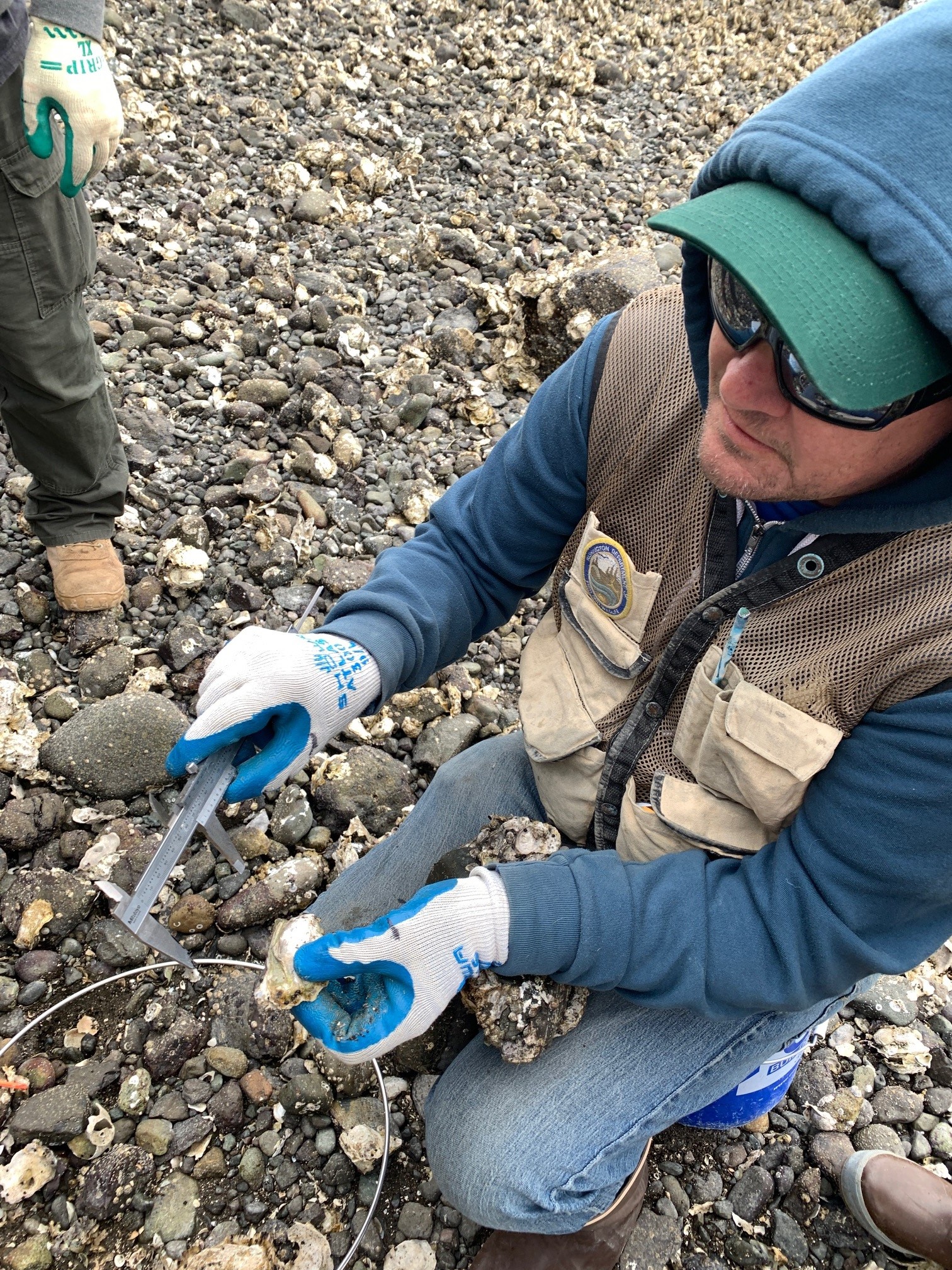OLYMPIA, Wash. — Oysters are probably not the first thing that comes to mind when thinking about managing natural resources on a National Forest. But on the Olympic National Forest there is a campground located on the Hood Canal that contains the
only federally managed oyster beds within the National Forest System. The Seal Rock Campground tidelands are home to Pacific Oysters and Olympia Oysters (native species) as well as butter clams, littleneck clams (native species), manila clams, horse clams, cockles, and some geoducks in sandy areas below the rocks.
“Oysters filter and clean water and provide habitat for many species. As they grow in clumps and form reef structures, they provide homes for invertebrates like crabs, shrimp, other shellfish, and small fish,” said Karen Holtrop, a Wildlife Biologist with the Forest Service.
 Photo: A Washington Department of Fish and Wildlife (WDFW) biologist measures an oyster at Seal Rock Beach April 11, 2024. USDA Forest Service photo by Karen Holtrop.
Photo: A Washington Department of Fish and Wildlife (WDFW) biologist measures an oyster at Seal Rock Beach April 11, 2024. USDA Forest Service photo by Karen Holtrop.
Forest biologists cooperatively manage the oyster beds under a joint management plan with the Port Gamble S’Klallam Tribe, Jamestown S’Klallam Tribe, Skokomish Tribe, and the Lower Elwha Klallam Tribe. The tribes and Forest Service take turns each year conducting oyster population surveys to determine health of the oyster population and set annual harvest limits. The oyster surveys catalog the size and number of shellfish as well as the presence of disease or predation from oyster drill snails, a non-native species that feeds on oysters.
Since Forest Service biologists do not normally get the opportunity to work in saltwater marine environments, they get assistance from the Washington State Department of Fish and Wildlife marine biologists when it is their turn. “Washington Department of Fish and Wildlife (WDFW) staff, including Camille Speck, the WDFW Puget Sound Intertidal Bivalve Manager, provided expertise on conducting the oyster population survey and the annual creel (oyster harvester) surveys,” said Holtrop.
Because of the cooperative efforts between the Tribes, Forest Service, and State of Washington, members of the public can safely harvest fresh shellfish from the Hood Canal. The tidelands also provide an excellent tide pooling opportunity and are home to sea stars, kelp crabs and midshipmen fish. “When we survey, we also note other species on the beach such as midshipmen fish, which is quite interesting,” said Holtrop. The midshipmen can breathe air when the tide is out and is also bioluminescent during courtship.
Mussels, clam, and oyster harvesting is open year-round. While the beach is federally managed, all Washington state safety rules, shellfish harvest regulations, and license requirements still apply. Shellfish harvesters should check Washington Department of Fish and Wildlife (WDFW) website for current water quality and safety information. The Washington State Department of Health advises harvesters to thoroughly cook shellfish harvested during May through September to avoid illness due to Vibriosis.
OYSTER
For current health status and water quality reports https://wdfw.wa.gov/places-to-go/shellfish-beaches/270210
For information on Seal Rock Campground
https://www.fs.usda.gov/recarea/olympic/recreation/camping-cabins/recarea/?recid=47917&actid=29
Article and photograph provided by Olympic National Forest staff.